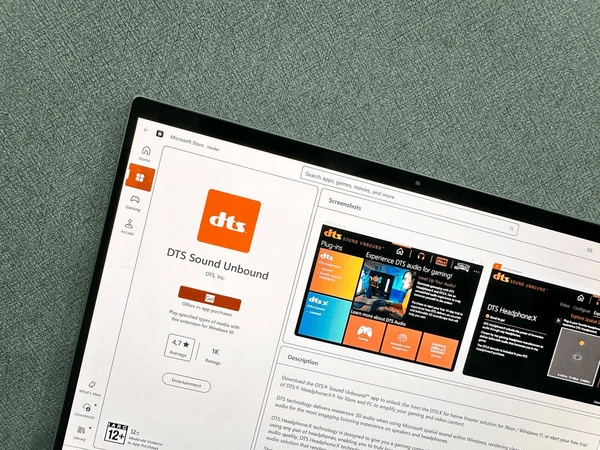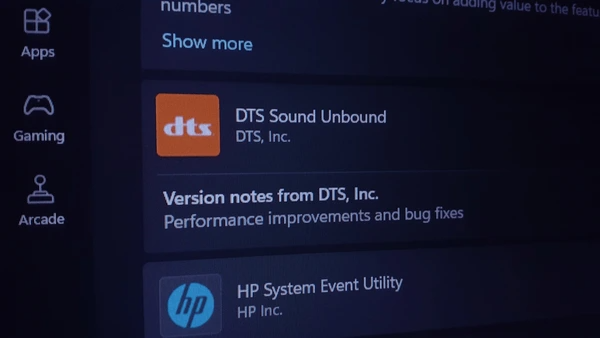
Introduction: Dolby Digital vs. DTS
When it comes to home theater audio, two of the most popular surround sound formats are Dolby Digital and DTS. Both technologies offer high-quality sound, but they differ in several key areas, from compression methods to audio clarity. This article will compare Dolby Digital vs. DTS, exploring their features, advantages, and how they impact your audio experience. Whether you’re setting up a home theater system or choosing the best format for your media, understanding the differences between these two can help you make an informed decision.

How Dolby Digital Works
Dolby Digital, also known as AC-3 (Audio Coding 3), is a digital audio compression format used primarily for cinema sound, television broadcast, and DVDs. It is designed to deliver high-quality, multi-channel audio in a compressed format, which allows for efficient storage and transmission while maintaining sound quality.
- Multi-Channel Audio: Dolby Digital supports up to 5.1 channels of surround sound. This setup includes front left, front right, center, surround left, surround right, and a low-frequency effects channel. It creates an immersive audio experience by distributing sound across multiple speakers.
- Compression: Dolby Digital uses psychoacoustic modeling to compress audio data. This technique reduces less noticeable frequencies, making the audio file smaller without sacrificing quality. It ensures efficient storage and transmission while maintaining high sound clarity.
- Bitrate: Dolby Digital typically operates at a bitrate of 384 kbps for a 5.1 channel setup. This bitrate provides high-quality audio while keeping file sizes manageable for storage and streaming.
- Applications: Dolby Digital is widely used in cinema sound systems, TV broadcasts, DVDs, and streaming services. It delivers high-quality audio in various settings, making it a go-to choice for immersive sound.
- Adaptive Bitrate Streaming: In streaming applications, Dolby Digital adjusts its bitrate based on network conditions. This ensures consistent audio quality, even if internet speeds fluctuate.

How DTS Works
Data Transformation Services (DTS) is a comprehensive data transfer and synchronization service designed to facilitate seamless data migration and real-time data flow across different systems and databases.
- Core Functionality: DTS is designed to transfer data between various sources like relational databases, NoSQL databases, and data warehouses. It supports both data migration and real-time synchronization, making it ideal for business intelligence, e-commerce, and remote access.
- Data Migration Process: Data migration typically involves three phases: schema migration, data migration, and full data migration. First, schema migration creates the target database schema based on the source. Then, in the data migration phase, incremental data is transferred to keep the target updated. Finally, full data migration ensures all data is moved to the target database.
- Real-time Data Synchronization: DTS supports real-time data synchronization. This feature enables continuous data flow between source and target databases, ensuring data consistency and high availability across systems.
- Advantages of DTS: DTS automates complex data transfer processes, reducing manual effort and minimizing human error. This allows businesses to focus on core activities while DTS manages the data.
- Use Cases: DTS is widely used for traditional data migration, real-time data warehousing, cross-border data synchronization, and building high-availability database architectures.

Key Differences in Sound Quality
Bitrate and Compression
Dolby Digital:
- Typically operates at 640 kbps on Blu-ray and 448 kbps on DVD.
- Uses variable compression, ranging from 10:1 to 12:1.
DTS:
- Generally has higher bitrates, at 1.5 Mbps on Blu-ray and 768 kbps on DVD.
- Supports lower compression levels, around 4:1.
Audio Channels
Dolby Digital & DTS:
- Both formats support 5.1 surround sound, including five channels (front left, center, front right, rear left, and rear right).
- Both formats also include a subwoofer channel for bass.
- Some systems support 7.1 channels, adding two additional side channels for better audio depth.
Sound Quality and Fidelity
DTS:
- Known for its superior sound quality due to higher bitrates and lower compression.
- Produces more detailed and less compressed audio.
Dolby Digital:
- Efficient at lower bitrates, providing solid audio quality despite compression.
- Offers technologies like Dolby TrueHD for lossless audio and Dolby Atmos for immersive, object-based surround sound.
Implementation and Usage
Dolby Digital:
- Has been the industry standard for years and is widely supported in various devices and formats, including films, TV broadcasts, and video games.
DTS:
- Developed as a competitor to Dolby Digital, but now supports advanced formats like DTS:X for object-based audio.
- Widely used in high-end audio systems.
Perception and Preference
Dolby Digital & DTS:
- Preference between the two formats can be subjective, often depending on personal taste and specific setup.
- Factors such as device compatibility, room acoustics, and system configuration affect the experience.
Dolby Digital vs. DTS: Which One Has Better Surround Sound?

Audio Quality and Bitrate
DTS:
- Often praised for better sound quality due to its higher bit rate.
- Higher bitrate allows for more detailed audio, with improved channel separation and clarity.
Dolby Digital:
- Known for advanced audio processing, which delivers excellent sound quality at a lower bitrate.
- Efficient encoding still maintains high-fidelity surround sound with less data usage.
Format Variants and Compatibility
Dolby Digital:
- Supports 5.1-channel surround sound, including five discrete channels and one for low-frequency effects (LFE).
- Higher variants like Dolby Digital Plus and Dolby Atmos add 7.1 channels and object-based audio for a richer, more immersive experience.
DTS:
- Also supports 5.1-channel surround sound.
- DTS:X is a more advanced format that offers object-based audio, enhancing the sound experience, especially in cinema settings.
Industry Adoption and Use Cases
Dolby Digital:
- Has been the industry standard for longer.
- Widely supported in films, streaming services, and gaming consoles, making it a reliable choice for many users.
DTS:
- Known for high-quality audio reproduction, DTS is popular in the home theater market.
- It competes with Dolby Digital in both cinema and consumer electronics.
User Preference and Perception
- Choosing between Dolby Digital and DTS often depends on personal taste.
- Some audiophiles prefer DTS for its higher bitrate and perceived sound quality.
- Others appreciate Dolby Digital’s processing technology and broader compatibility.
Choosing the Right Format for Your Setup
Cost Efficiency
- Dolby Digital: Being the standard for many years, Dolby Digital is more commonly used in budget-friendly audio systems and content. It offers excellent value without sacrificing quality, especially for everyday use.
- DTS: While DTS is often associated with premium systems, the technology can come at a slightly higher cost. If you’re looking for top-tier sound reproduction and are willing to invest more, DTS offers superior performance.
Final Thoughts
When deciding between Dolby Digital and DTS, consider your system’s compatibility, sound quality preferences, and budget. If you seek a reliable, affordable, and widely supported option, Dolby Digital is the perfect choice. However, if you’re after high-end sound with less compression and a more immersive experience, DTS could be the right fit for your setup. Both formats have their merits, so choose based on what best suits your home theater needs.
To get detailed scientific explanations of Dolby Digital vs. DTS, try Patsnap Eureka.

